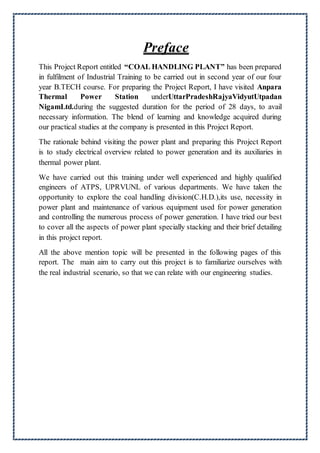The document provides an overview of the coal handling plant (CHP) at Anpara Thermal Power Station in Uttar Pradesh, India. It discusses the basic processes in a CHP, including receiving coal via rail or conveyor, crushing the coal, transporting it to bunkers via conveyor belts and trippers, and storing excess coal via stacking and reclaiming. The CHP handles coal from receipt to transporting it to boilers and bunkers. It also processes raw coal to the required size for boiler operations. The CHP faces various challenges like design issues due to lower quality coal, problems during monsoon season, and mechanical failures of equipment.

























